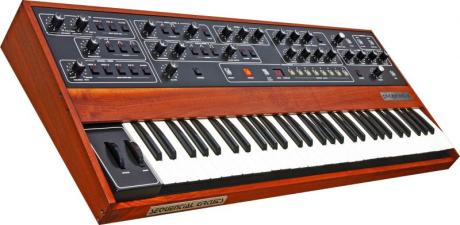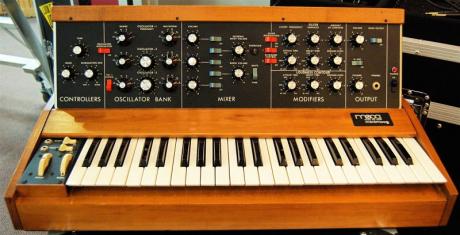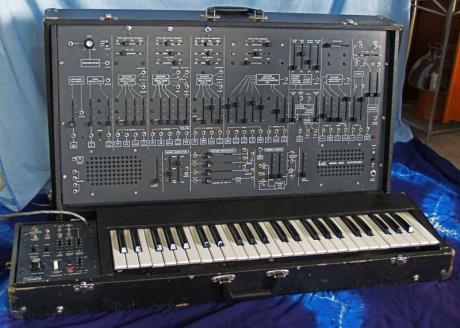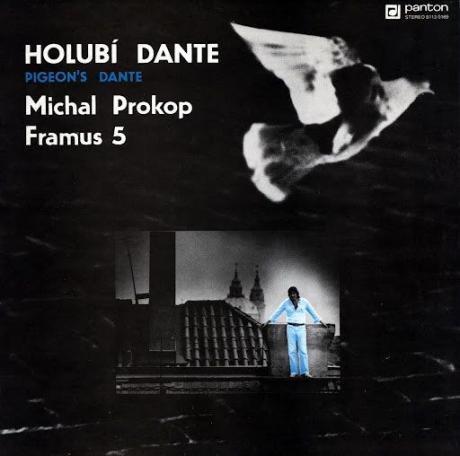Rockové klávesy - Analogová syntéza zvuku od základu – část 1.
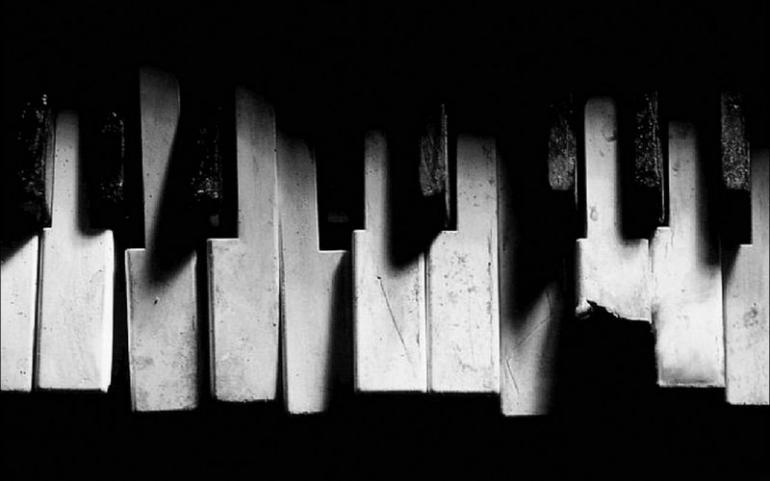
Analog Synthesis In-Depth - Pt 1
Welcome readers! This month, we will begin a three part mini series on analog synthesis. Analog synthesizers like the Minimoog, Arp 2600, and Prophet 5 revolutionized the music of the 1970’s as well as being widely used in all genres of music today. Artists like Stevie Wonder, Yes, Emerson Lake and Palmer, and Herbie Hancock pushed these instruments to the limit of their abilities creating amazing sonic masterpieces in the process. This month, we will focus on the origins of analog synthesis and give an overview on how these interesting electronic devices turn electricity into sound.
Early Analog Synthesizers
The first analog synths actually appeared in the 1920’s and used vacuum tubes and newly developing electro-mechanical technology. One of these early instruments was the Ondes Martenot invented by Maurice Martenot. This instrument was used by French composer, Olivier Messiaen, most notably in the piece Fête des Belles Eaux. Another early electronic instrument invented in 1928 was the Theremin which makes an appearance in the Beach Boys hit Good Vibrations and in the Led Zeppelin’s rock anthem No Quarter. Although not usually thought of as an analog instrument, the Hammond Organ, invented by Laurens Hammond in 1935, used magnets and spinning sine wave generators called tone wheels manipulated by drawbars to create its magical sound.
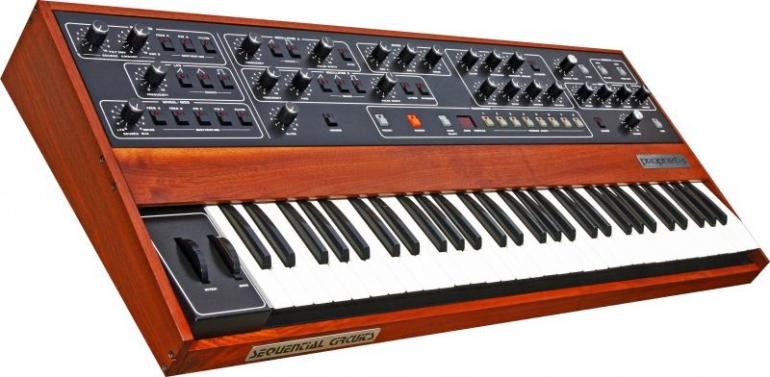
Late 1960’s Analog Synths
In the mid to late 1960’s modular synthesizers appeared on the scene. These instruments made use of patch cables to connect different components such as voltage controlled oscillators, filters, and amplifiers. The downside of these first modular synths was that most were very expensive and often had hard to find glitches in the units because the patch cables would break. As an answer to these problems, Robert Moog designed the smaller, cheaper, pre patched Minimoog in 1970 that had all these connections hardwired in the unit. The Minimoog influenced the design of nearly all subsequent analog synthesizers, with a keyboard, pitch wheel and modulation wheels. It also included a three part signal chain consisting of an oscillator, filter, and amplifier that has become standard on almost all analog keyboards. Let's take a look at this three stage process of sound creation.
1) Pitch created by an oscillator
The beginning of this chain starts with an oscillator. An oscillator, quite simply, is a device for creating waveforms. On older analog synths these have names like square, saw tooth, and triangle which we will investigate more later in the article. For now, let’s just say an oscillator is a circuit that produces a periodic electronic signal by converting direct current into a alternating current signal. These different waveforms have different sounds depending on the "shape" of the signal produced. The difference of the harmonic content of these waves can be seen on an oscilloscope.
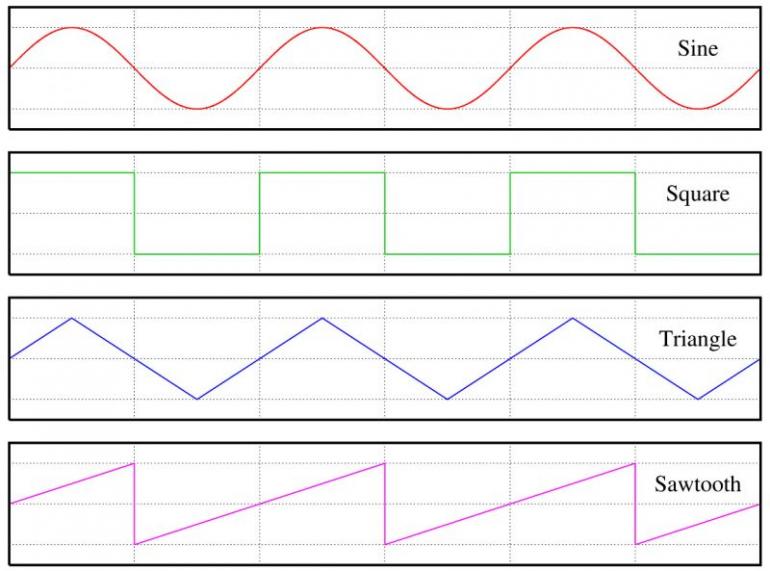
2) Tone (timbre) shaped by a filter
It wouldn’t be very interesting if we just had pure waves for our synth sounds. This is where the filter comes in. There are a few different types of filters which we will focus on next month. For now, let’s say the most common types are hi pass, low pass, and band pass. These different types of filters effect the waves mostly by two main controls; cutoff frequency and resonance. The cutoff frequency determines the point at which the filter starts filtering and the resonance amplifies the frequencies around the cutoff point.
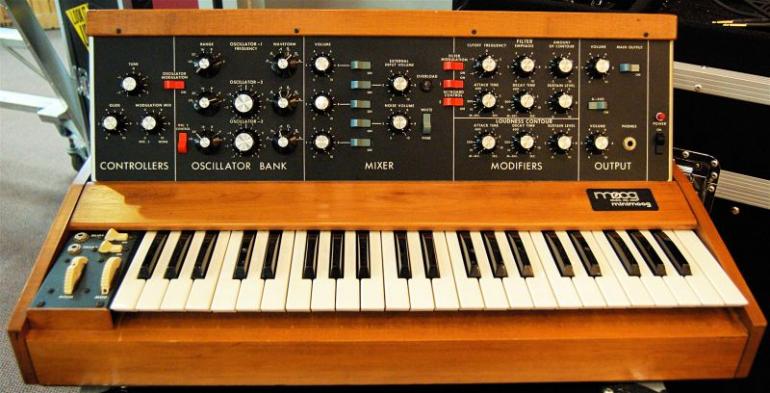
3) Loudness controlled by an envelope generator
After the filter, the sound travels to a volume envelope which, on most synths, has four parts. By manipulating these four variables, the way the sound behaves after a key has been stuck can have great variance:
Attack: The length of time it takes a sound to reach it’s full volume.
Decay: The time it takes for the volume to reach the second volume level known as sustain.
Sustain: The volume level at which the sound sustains after the decay phase.
Release: The time it takes for the volume to go to zero. When this setting is higher, the sound will continue even after the key is released.

Different Waveforms
www.youtube.com/watch?v=nLKiGwdMgig
Waveforms all have different tonal characteristics. The addition of harmonics is what causes each to sound differently. Let’s take a look at a few of these common waveforms. Please check out the video link to hear the differences. I've also enclosed an image so you can see the different shapes of each wave.
Sine wave: The sine wave produces a very simple flute like tone with no harmonics.
Triangle wave: Somewhat similar to a sine wave but contains a few harmonics.
Square wave: Is made up of an odd number of harmonics and has a “hollow” sound. The more odd harmonics are added the more “square” the wave becomes.
Saw tooth wave: Contains all harmonics and sounds sharp and brassy.
Noise wave: Has a combination of many frequencies and harmonics and sounds like... well... noise... quite frankly. -:)
Tune in to part 2 of Analog Synthesis next month where we will begin to investigate how filters are used to color the raw waveforms.
Fráze a hudební termíny:
Vacuumtubes: Lampy či elektronky. Většinou se ale označují pouze „tubes“ (v americké angličtině) nebo „valves“ (v UK). To jen abyste neměli pocit, že „vaccum tube“ je nějaký speciální typ lampy.
Glitch: Problém či závada. V tomto smyslu je slovo použito i v tomto článku. V hudebním žargonu se ale tento výraz často požívá i pro nejrůznější chaotické chvění zvuku, např. v důsledku jeho ovlivnění nějakým efektem. Zkuste hrát vícezvuky či rozklady přes efekt pitchshifter a ihned poznáte, jakému zvuku se říká glitch (výjimkou jsou polyfonní pitchshiftery). Chcete-li slyšet, jak to zní, poslechněte si např. úvodní kytaru ve skladě My Iron Lung od kapely Radiohead.
Patchcables: Jsou vám jistě dobře známé krátké propojovací kabely, které se používají mezi efektovými „krabičkami“ nebo právě u modulárních syntezátorů.
Pre-patched: Předem propojený. V Minimoogu byly jednotlivé moduly „prodrátovány“ už v továrně, proto Brian použil tento výraz.
Amplifier: To, že to znamená zesilovač, jistě víte. V případě analogových syntezátorů se ale nejedná o nějaké kombo či něco podobného. Je to poněkud matoucí výraz pro modul, který manipuluje s hlasitostí tónu a podílí se na průběhu tónu („envelope“ - viz níže).
Envelope: Oobálka zvuku, tedy křivka určující změny hlasitosti tónu od stisknutí klávesy až po úplné odeznění. Touto křivkou se řídí modul zvaný zesilovač (amplifier).
Alternating current, direct current (AC/DC): Střídavý a stejnosměrný elektrický proud. Ano, název té legendární australské kapely je odvozen od toho.
Band passfilter: Filtr, který propustí jen frekvenční pásmo vámi nastavené šířky a ořízne vše pod ním i nad ním.
Cutofffrequency: Frekvence, nad kterou (případně pod kterou) začne filtr „zabírat“.
Harmonics: Vyšší harmonické neboli alikvoty.
Brassy: Přídavné jméno, které znamená něco jako „zvukem připomínající žesťové nástroje“.

